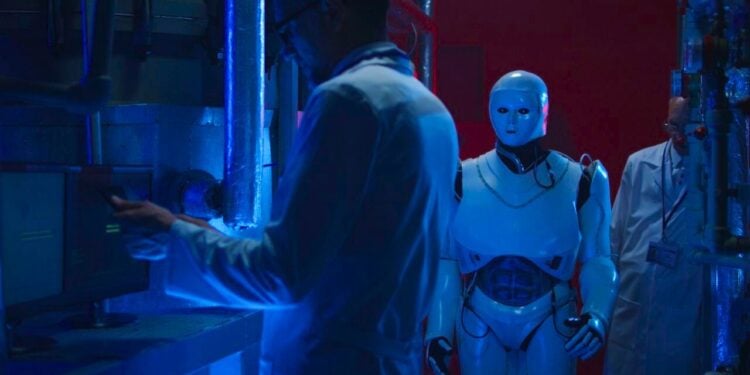- Tesla plans to employ advanced AI, robotics, and battery technology to realize humanoid robots, though the complexity of the task makes the timeline ambitious.
- The introduction of humanoid robots may lead to job displacement in manual and semi-skilled labor, but also the creation of new roles and industries, demanding effective retraining programs and thoughtful transition management.
- The deployment raises ethical questions about job quality and social equity, necessitating inclusive policies to ensure fair distribution of benefits and prevent economic disparity, while also potentially boosting productivity and economic growth.
Elon Musk, a name synonymous with disruptive innovation and controversy, has set the tech world abuzz again with his latest declaration: Tesla will begin deploying humanoid robots as early as next year, and Musk has said they should cost less than $20,000 each.
“The world’s richest person, who has a penchant for making overambitious claims on social media, posted on his platform X, formerly Twitter, that he also hoped to expand into ‘high production’ mode to make robots with a humanlike form available sell to other companies in 2026,” according to The Guardian.
This announcement signifies a possiblly transformative moment that could reshape labor and employment as we know it. If the rollout is successful, it has massive potential to impact how work is structured, the types of jobs that are available, and the skills that will be valued in the future.
Is It Technologically Feasible?
Tesla’s humanoid robot, dubbed the “Tesla Bot,” was first introduced at Tesla’s AI Day in 2021. The premise centers around creating a general-purpose bipedal robot capable of performing tasks that are dangerous, repetitive, or mundane.
According to Musk, the Tesla Bot will stand approximately 5 feet 8 inches tall, weigh around 125 pounds, and be capable of handling a variety of tasks currently performed by human laborers.
The feasibility of such an endeavor hinges on several key technologies:
- AI: Advanced AI systems will be required to process sensory data, interpret environments, and make real-time decisions.
- Robotics: High levels of dexterity and mechanical design will be essential for the Tesla Bot to mimic human movements and capabilities.
- Battery Technology: Efficient and long-lasting batteries will be crucial for the robot’s operational autonomy.
Given Tesla’s experience in AI (evidenced by their autonomous driving technologies) and advancements in battery technology, Musk’s ambitious timeline may be within the realm of possibility. However, the complexity of creating a fully functional, general-purpose humanoid robot should not be underestimated.
Implications for the Future of Work: Job Displacement vs. Job Creation
One of the most immediate concerns is the potential for job displacement. Humanoid robots could perform tasks ranging from factory line work to delivery services, potentially replacing human workers in numerous manual and semi-skilled labor jobs.
However, history suggests that technological advancements often lead to the creation of new types of jobs. For example, the advent of computers has generated an entire industry of IT professionals, software developers, and cybersecurity experts.
The key challenge will be to manage the transition period effectively by investing in comprehensive retraining programs to equip displaced workers with new skills suitable for an evolving job market, while simultaneously cultivating the development, maintenance, and oversight of robotic systems, thereby spawning new industries and job categories, ranging from AI specialists to robotic service technicians.
Ethical Considerations
The deployment of humanoid robots raises ethical questions, particularly around job quality and social equity. Although the jobs that remain or are newly created could potentially be of higher quality, requiring greater skills and offering better compensation, achieving this outcome necessitates conscientious policy-making and corporate responsibility.
The benefits of robotic labor could worsen existing social inequities if not managed inclusively, requiring that the wealth generated from increased productivity be distributed fairly to prevent widening economic disparity.
Long-term Societal Impact
The long-term integration of humanoid robots into society could significantly boost productivity and economic growth due to increased automation, which may usher in a new era of prosperity.
As robots take over mundane and dangerous tasks, human labor could be redirected towards more creative and fulfilling activities, potentially enhancing overall quality of life. Additionally, the broad acceptance of humanoid robots in daily life will necessitate cultural adaptations as society redefines its understanding of labor, productivity, and human-robot interactions.
Musk’s announcement of Tesla’s goal to deploy humanoid robots presents both exciting opportunities for the future of work and significant challenges. While the technological feasibility is still being explored, the potential implications for the workforce and society at large are substantial.
As we are on the verge of a new technological frontier, careful planning, inclusive policy-making, and proactive societal engagement will be essential to harness the full potential of humanoid robots.


 Dr. Gleb Tsipursky – The Office Whisperer
Dr. Gleb Tsipursky – The Office Whisperer Nirit Cohen – WorkFutures
Nirit Cohen – WorkFutures Angela Howard – Culture Expert
Angela Howard – Culture Expert Drew Jones – Design & Innovation
Drew Jones – Design & Innovation Jonathan Price – CRE & Flex Expert
Jonathan Price – CRE & Flex Expert











